Are you thinking of remodeling your kitchen, wondering what method to use – hand painting or spraying cabinets? Should you go for the classic, reliable method or try the new and innovative one? It's enough to make your head spin.
But fear not, dear homeowner, for we have a quick guide to help you make the right choice. Think of it as a choose-your-own-adventure book, but instead of battling dragons, you'll be battling dust bunnies.
What to prefer, something traditional or more modern? These are just some of the factors to consider. Which way will take longer than the other? We understand your dilemma! Just grab a coffee, relax, and let's get started.
In this post, we will discuss the intricacies of hand painting vs spraying cabinets and which one is recommended from an aesthetic point-of-view and cost-efficiency perspective.
Before we jump right into the battle to know which painting is suitable for the kitchen, let's know:
Contents

As the name implies, hand painting is the application of paint to a surface using one's hand rather than a brush or roller.
The hand painting process is more labor-intensive than spraying cabinets. When hand painting is done correctly, it takes time to hand-paint the piece carefully. It is essential to hand paint with patience and hand paint each item for hand painting.
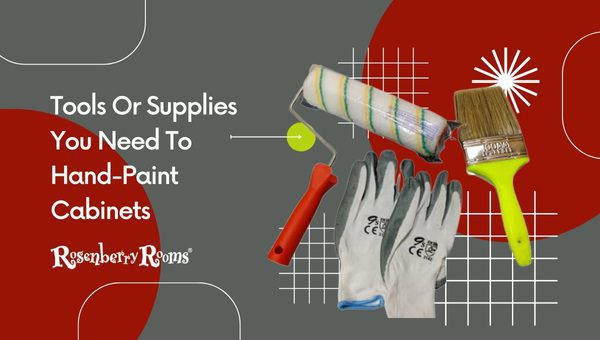
To hand-paint cabinets, you will need the following supplies:
Paint can be classified by its type and application method. The two types of paint are latex and oil. Latex paint is water-based, and oil-based paint is based on oils such as linoleum or alkyd, made from petroleum byproducts. Latex paint is a better choice for cabinets because it is more durable and easier to clean. It also has a broader range of colors to choose from.
Ensure you use a hand-held paint blender, hand sander, and vacuum. Always use a film finish for hand-painting cabinets.
A paint roller is a tool used to apply paint. It is a cylindrical roller covered in foam, bristles, or cloth. It can be hand or machine-powered. It is often "wet" by dipping the roller into the paint.
Paint rollers generally come with a scraper edge that pushes excess paint off the surface onto a paper towel or rag before it comes into contact with another surface. The hand-powered versions may also have a plastic frame to make painting easier.
A paintbrush is a brush used to apply paint. You can make it from various materials, including natural bristles, synthetic bristles, or wire.
A paint tray is a hand-held container used to hold and apply paint. It is often made from plastic and might be made from metal or other materials.
Rags are pieces of cloth used to clean surfaces and absorb liquids. They are often made from cotton but can also be made from other materials, such as synthetic fibers.
Sandpaper is a material used to smooth surfaces by abrasion. It is often made from sand, glass, or other abrasive materials.
Primer is a viscous substance applied to a surface to prepare it for painting. It creates a layer that helps the paint adhere and prevents them from absorbing the material.
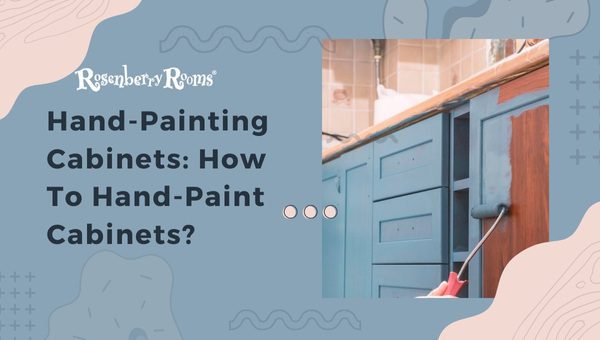
Hand painting cabinets is a process that requires more care and precision than spraying them. To hand-paint, you'll need to use paintbrushes, rollers, sinks with water, or squirt bottles for some priming. You'll also need some white vinegar to clean the brush if necessary.
Many colors are available for hand-painting cabinets; ponder upon - Which colored hand paint should I pick?
Hand painters generally offer a more comprehensive range of colors for hand-painted cabinets. Some hand painters may have a limited selection of colors. Discuss the options with your hand painter to ensure you're happy with the color selection.
Before hand-painting your cabinets, most hand painters will cover their hands with hand lotion. This hand lotion should not have any oil in it as this will make the hand painter's hands slippery, and they may not be able to get a firm grip on the cabinet.
The first step in hand painting is priming. Priming involves applying a layer of primer on your cabinet before hand-painting it with the desired paint color - this will help create an even finish and prevent stains from showing up later on.
Each hand-painted cabinet requires at least three coats of paint. The process starts with two coats of primer followed by one coat of latex or oil-based paint, depending on the type you have. Then it's hand-painted. The hand painting should be done in a pattern so that hand painters can quickly identify which hand painting they need to do next.
After priming the cabinet, you'll then need to hand-paint the topcoat. It will require four to six coats, depending on whether you want an opaque or translucent look. It is the final step of hand painting, and ensuring it's done correctly is essential.
Applying two layers of paint is more effective, but one will do it in a pinch. When you nail on the topcoat, it's essential to use a brush or roller and ensure it is evenly distributed. It's crucial to go slowly with this phase so that the cabinet appears at its best.
For most hand painters, hand painting cabinets is a time-taking task requiring effort and precision. Still, it's worth it to have a beautifully hand-painted cabinet. The attention to detail needed during the hand-painting process ensures that the cabinet looks its best and lasts for many years.
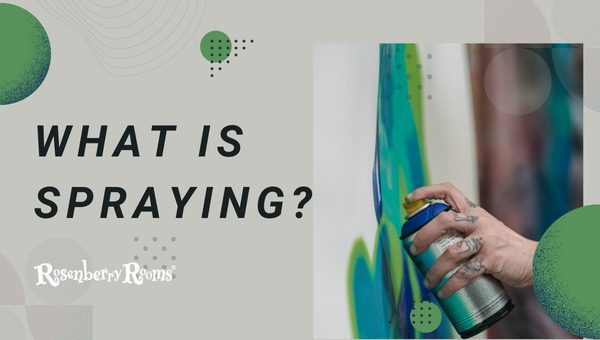
Spraying is spraying a liquid onto a solid to create a surface. Use a sprayer, such as an air spray gun, an aerosol can, or a water-based sprayer, with several different coatings, to give the surface a specific look.
The texture and pattern on the surface can be achieved in many ways, with several coats of paint being applied one after another until reaching the desired appearance. When spraying cabinets, it is essential to dry the color before using the wardrobe.
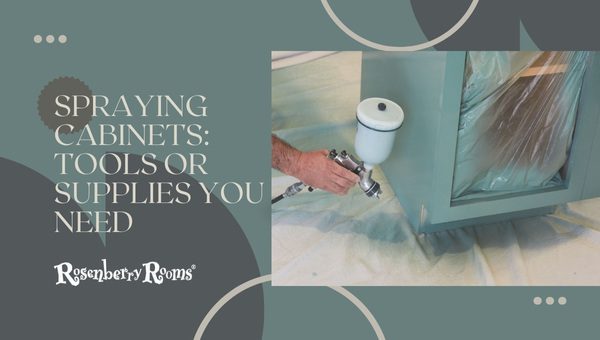
When spraying cabinets, you'll need to have the following tools and supplies on hand:
You'll need to use quality paint designed for cabinets. The paint should be oil or latex-based, and choosing the right type of paint is essential depending on the finish you want.
A good paint sprayer is essential for spraying cabinets. It's essential to choose a durable and easy model to operate.
An air compressor is necessary for powering the paint sprayer. Make sure to choose one that is powerful enough for your needs.
It's essential to wear safety gear when spraying cabinets, including masks, gloves, and goggles, to protect yourself against the chemicals.
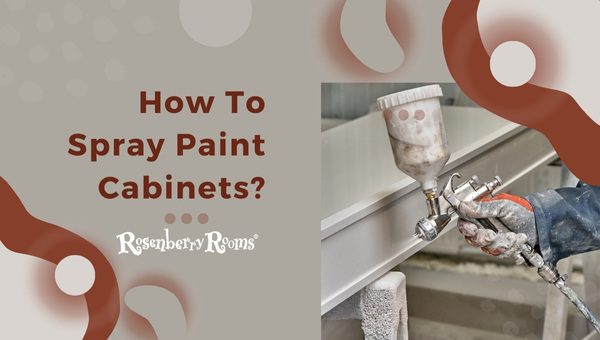
It would be best to gather supplies to spray paint cabinets, including a spray gun, primer, and paint.
The colors available for spraying are white, black, almond, light almond, bisque, linen, and grey.
Priming The Cabinets
The first step is to prime the cabinets. Apply a layer of primer to the surface of the cabinet before spraying it with the desired color of paint. Priming will help the paint adhere evenly to the surface and prevent stains from appearing later on.
You can spray cabinets in just a few hours with hand sprayers, hand rollers, or hand brushes. You will first have to pre-mix the paint colors with the hand sprayers. Hand rollers are utilized for covering large surfaces quickly. You'll need hand brushes specifically for painting edges and corners.
The process of spraying cabinets is much more straightforward than hand-painting them. The skill level necessary can also range depending on using hand spraying tools or an air compressor power sprayer. Always read the paint and primer labels to ensure you use the correct type for your project.
After priming, you can then start spraying the cabinets. Hold the spray gun about 8-10 inches from the cabinet and spray in short, even strokes. Make sure to overlap each stroke with the one before it to ensure even coverage.
Be careful not to overspray, as this can lead to drips and runs. Confirming that you don't apply too much paint at once is essential, as this can also cause problems. Keep the gun moving at all times, and don't stop until the surface is completely covered.
Having good ventilation and using a respirator mask when working in an enclosed space is critical.
It's important to avoid spraying in direct sunlight, as the paint can dry too quickly and result in an uneven finish. Try spraying the cabinets in a shaded area or in the evening when the sun sets.
Spray-painted cabinets will need to be resprayed at least once a year, and hand-painted cabinets will require repeating every two years. The hand-painted cabinets will last for a while if you have a solid surface to hand-paint on. You should hand-paint on a plasterboard or particleboard surface to stay longer.

We are calling all home renovation enthusiasts and DIY lovers! It's time to settle the debate: hand painting vs spraying - which technique reigns supreme in cabinet makeovers? Get ready for the ultimate showdown: the Battle of the Cabinets.
Will the centuries-old hand painting technique prove its worth, or will spraying take the crown for its even, flawless finish? With witty banter and informative insights, this battle will leave you entertained and informed. So grab some popcorn and settle in because the Battle of the Cabinets is about to begin!
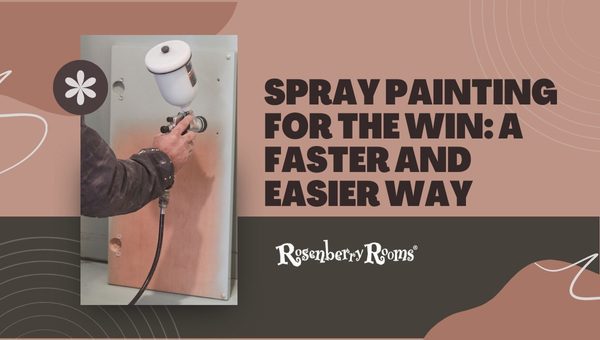
Are you tired of staring at your bland and outdated kitchen? Fear not; spray painting is here to save the day! With a quick and easy application, you can transform the entire feel of your kitchen in no time. Say goodbye to the tedious task of sanding and painting by hand and hello to the simplicity of spray paint.
Plus, with a variety of colors and finishes to choose from, you can let your creative juices flow and truly make your kitchen your own. Trust us, and you won't regret giving spray painting a try - it's a game changer when updating your home. Check below to know in-depth why!
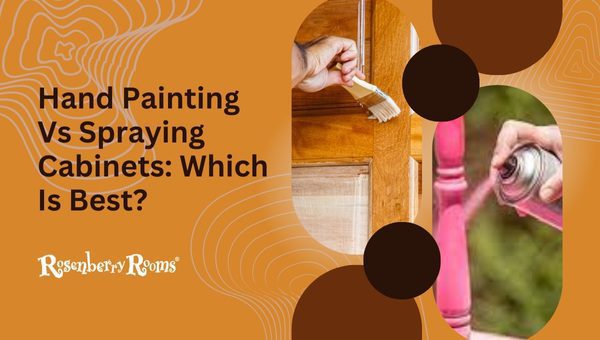
When hand painting or spraying your cabinets, there are a few things to consider. The cost of each service, the time it takes for both options and how much work hand painting requires. We will explore these three factors in depth below!
The price of hand painting and spraying cabinets can vary depending on a few factors. For hand painting, the most significant expense is the paint itself. You will also need to pay for the painter's time, which can add up if your cabinets are large or have a lot of details.
Hand painters may offer lower prices on specific projects depending on their skill level and availability.
Spraying cabinets are less expensive than hand-painting since you only need spray paint and a canister to hold the color. Purchasing a particular spray gun to use this method is good. The gun can be expensive, but it will last for many projects.
The time it takes to hand paint cabinets is significantly longer than spraying cabinets. It might take 4 to 8 hours to hand-paint a kitchen cabinet, depending on the level of detail and the number of coats of paint used.
Spraying cabinets is a much faster process. It is easy to spray an entire cabinet in only 20 minutes. Allowing the paint to dry before using the cabinet would be best.
Hand-painting takes longer than spraying; this is not always true when comparing two skilled professionals with the same experience level. In some cases, hand painting may be completed faster due to the knowledge and skill of the hand painter.
Hand painting requires significantly more effort than spraying cabinets. Hand-painting cabinets requires more work than spraying. It is more labor-intensive to hand paint cabinets than spray them in most cases. It is because:
It is a significant downside to hand painting because hand painters must be mindful of where they put their hands and how quickly they paint.
Spraying cabinets do not have this problem as it takes less effort, time, and labor. It's also easier for hand painters to miss spots on the cabinet when spraying instead of hand-painting the item, which requires the person to be more careful.
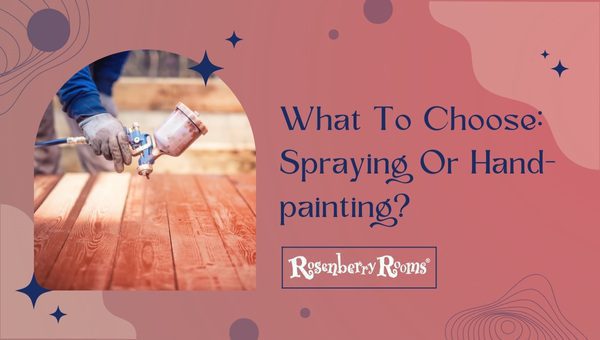
Hand-painting leaves your home with an individualized appearance that is impossible when using paint sprayers. Spray-painting cabinets will still work well, but hand-painted ones can last many years if done correctly. Hand-painting on a plasterboard or particleboard surface will help hand-painted cabinets stay longer.
If you're not sure which one to prefer, then experiment with both and keep track of how long they last before you decide which one is best.
If your cabinets are white, hand painting may be the way to go, as there's a chance that the paint will chip. Hand painting is a beautiful way to update the look of your home. You'll need to hand-paint or hand-stain if you're working with white cabinets.
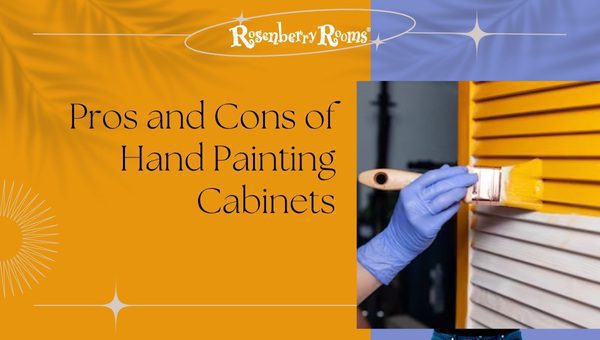
Ready for a DIY project to give your kitchen a whole new look? Hand-painting your cabinets might do the trick! While there are pros and cons to taking on this task, the result can be worth the effort.
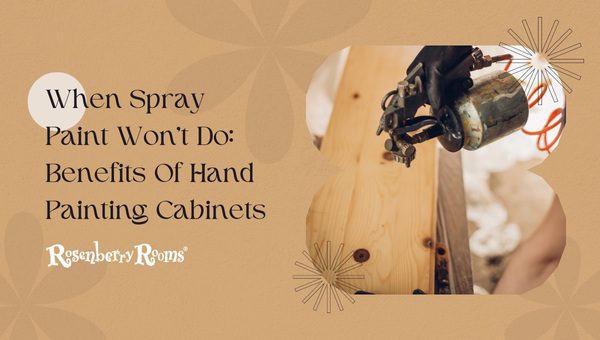
When giving your cabinets a fresh, new look, spray paint can seem like the easiest solution. But what happens when you want to add a personal touch or a unique design? That's when hand painting comes in.

Are you trying to decide between hand-painted or sprayed cabinets for your kitchen remodel? Well, let's put them to the test! Think of it like a cooking competition - both methods have strengths and weaknesses, but ultimately, we must taste the final dish.
Hand painting cabinets requires a steady hand and a good eye, while spraying cabinets delivers a more even finish. The actual test is in the durability and longevity of the cabinets. Will the paint hold up with daily use and wear and tear? Only time will tell. So, let's get crafting and see which method will come out on top!

The hand painting or spraying of cabinets is one of the most common home improvement projects DIYers undertake. However, the decision to hand paint vs spray proves challenging for some people, as each alternative has several advantages and flaws.
When it comes to painting cabinets, you have two main options: hand painting or spraying. Each method has its own advantages and disadvantages, so it's important to weigh them carefully before making a decision. Here are some frequently asked questions about the topic:
Generally, spraying gives a smoother finish than hand painting. When you spray paint, the paint particles are more evenly distributed, which can result in a more consistent and professional-looking finish. However, a skilled painter can achieve a smooth finish with either method.
Spraying is usually faster than hand painting, especially for large surfaces like cabinets. With spraying, you can cover more area in less time, and the paint dries more quickly. However, spraying requires more setup time and cleanup time than hand painting.
Hand painting is generally more cost-effective than spraying. Hand painting requires less equipment and setup time, and you can use less paint overall. However, if you're hiring a professional painter, the cost difference may not be significant.
Both hand painting and spraying can result in a durable finish, but it depends on the quality of the paint, the preparation of the surface, and the painter's skill. A good painter can ensure the finish is durable and long-lasting, regardless of the method used.
You can certainly paint your cabinets yourself, but it's essential to have some experience and skill before attempting it. If you're not confident in your abilities or if you want a flawless and professional-looking finish, it's best to hire a professional painter who specializes in cabinet painting.
While comparing hand painting vs spraying cabinets, take some time to weigh the pros and cons against each other first so that you know what to expect from your project. Either approach can create beautiful cabinets, but before you start working, ensure you pick the one that will give you the best gratification and results. And lastly - happy cabinet remodeling!